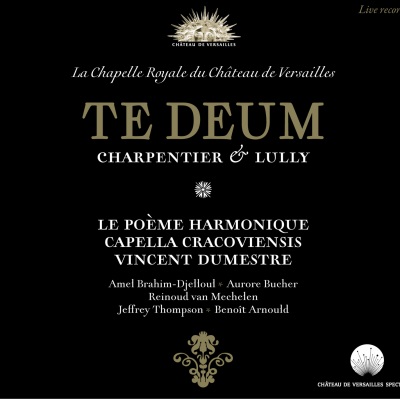
Te Deum: Charpentier & Lully
Review by James Manheim The large-scale sacred music of the French court remains among the most neglected repertories of the Baroque era. Here's an excellent place to start with it. The Te Deum, the quintessential Catholic hymn of praise, was a favored text for big moments at court, and the two examples here must be among the finest. Jean-Baptiste Lully's Te Deum, LWV 55, during whose premiere the composer fatally stabbed himself in the foot with a staff, was composed to celebrate the Sun King's recovery, via a pretty ghastly surgery, from what appears to have been a severe case of hemorrhoids. The more cheerful occasion of Charpentier's setting was a French military victory in the Low Countries. In both cases you get full-scale splendor, with chorus, brass, and orchestra in harmonically static settings. The two works showcase their composers' differing personalities: Lully's work is weightier and more contrapuntally dense, while Charpentier's is bright, instrumentally varied, and rich in instrumental textures. The performances here, by a mixed group of French and Polish musicians, are superb, with no minimalist budget-cutting involved. Best of all is the sound, captured at the royal chapel of the new palace of Versailles that reflected the spirit embodied in this music as well: the curiously named Outhere Music label from France achieves an impressive mixture of brightness and definition, and it's hard to imagine a more appropriate sound environment. Joyous, rich music, wonderfully performed, highly recommended.
